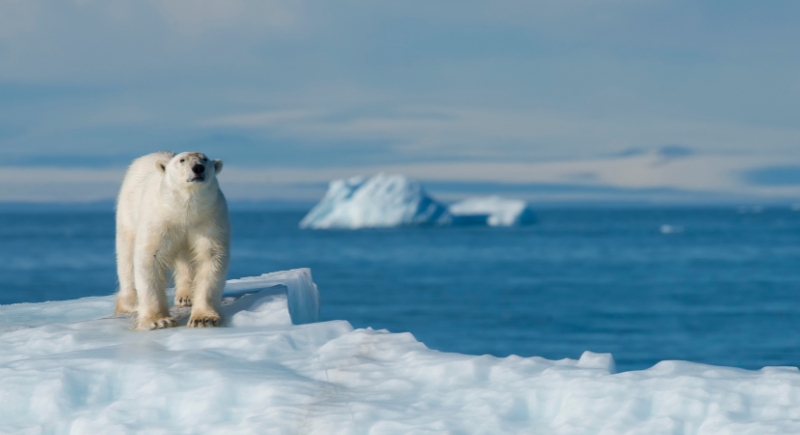Polar Bear Slides Across Thin Ice to Avoid Breaking It, Proving Animals Are Smarter Than Us
A short video of a polar bear has grabbed attention online for the way it crossed a sheet of fragile ice. Instead of walking, the bear dropped onto its stomach and inched forward with its front paws. The clip was posted on Twitter by Indian Administrative Service officer Supriya Sahu and quickly spread. Her caption suggested the bear wasn’t only keeping itself safe on thin ice but also offering a lesson in how to handle pressure without giving way.
Viewers were struck by the simplicity of the move. Walking concentrates weight on small points, while lying flat spreads it out. By shifting its body this way, the bear lowered the risk of breaking through. Many praised the action as an instinctive fix, noting that animals often act with a clarity people lose when they’re caught up in other distractions.
Nature’s Built-In Problem Solvers
Arctic wildlife doesn’t get many second chances. A wrong step on thin ice could be fatal, so survival depends on instinctive decisions. Watching the animal figure out a solution on the spot feels like a glimpse into nature’s version of a classroom.
While people spend years learning theories and equations, animals like polar bears lean on built-in survival skills. That difference makes them look far more capable when the environment is unforgiving. Polar bears already live in one of the harshest regions on Earth, with temperatures that can sink to -40˚C and winds that strip away warmth in seconds.
The Science of Staying Ice-Free
Scientists have also studied how polar bears avoid freezing after swimming in Arctic waters. A team led by PhD student Julian Carolan at Trinity College Dublin found that their greasy fur is the key. Sebum secreted from their skin contains cholesterol, diacylglycerols, and fatty acids that make their fur water-repellent. This coating stops ice from forming on their bodies, keeping them mobile and warm. Beyond survival, the greasy fur also helps them hunt by sliding quietly over ice while stalking seals.
The research, published in Science Advances, suggests that the anti-icing qualities of polar bear fur could inspire eco-friendly materials for humans. Airplanes, wind turbines, and cars could all benefit from designs that resist ice naturally instead of relying on chemical sprays. Interestingly, Indigenous Arctic communities recognized this property long ago. They used polar bear fur on hunting stools to slide silently over frozen ground without alerting prey.
Smarter Than We Think

Image via Getty Images/webguzs
Scientists estimate there are around 26,000 polar bears left in the wild, most living across Canada, Greenland, Norway, Russia, and Alaska. Surviving in these regions means dealing with thinning sea ice and longer swims in freezing water, within harsher hunting conditions.
Each adaptation, from their sliding trick to their oily fur, shows how they use both instinct and biology to overcome obstacles that would stop most other species in their tracks. Watching them adapt so naturally should leave us wondering if humans, with all our inventions, are really as clever as we think.